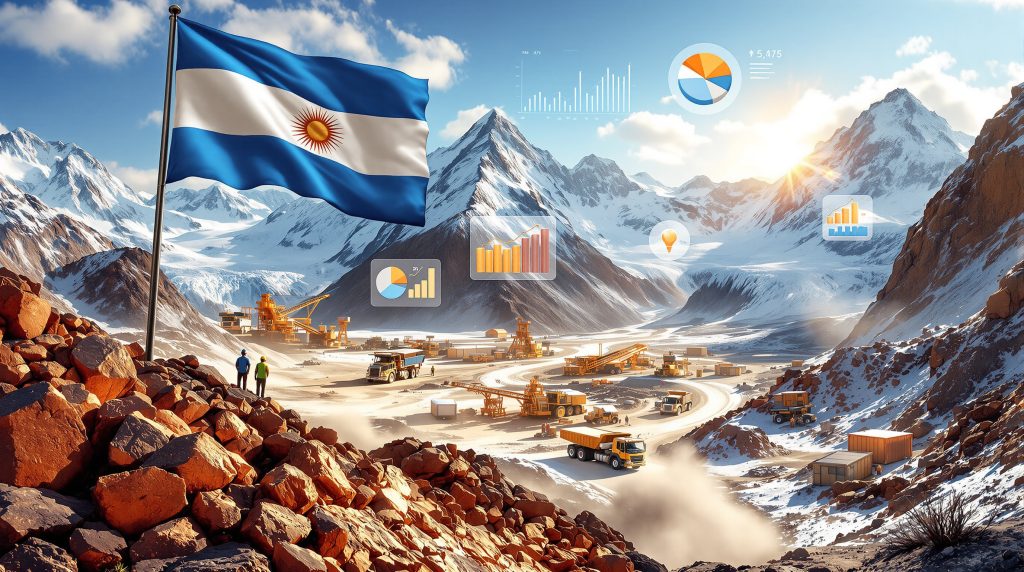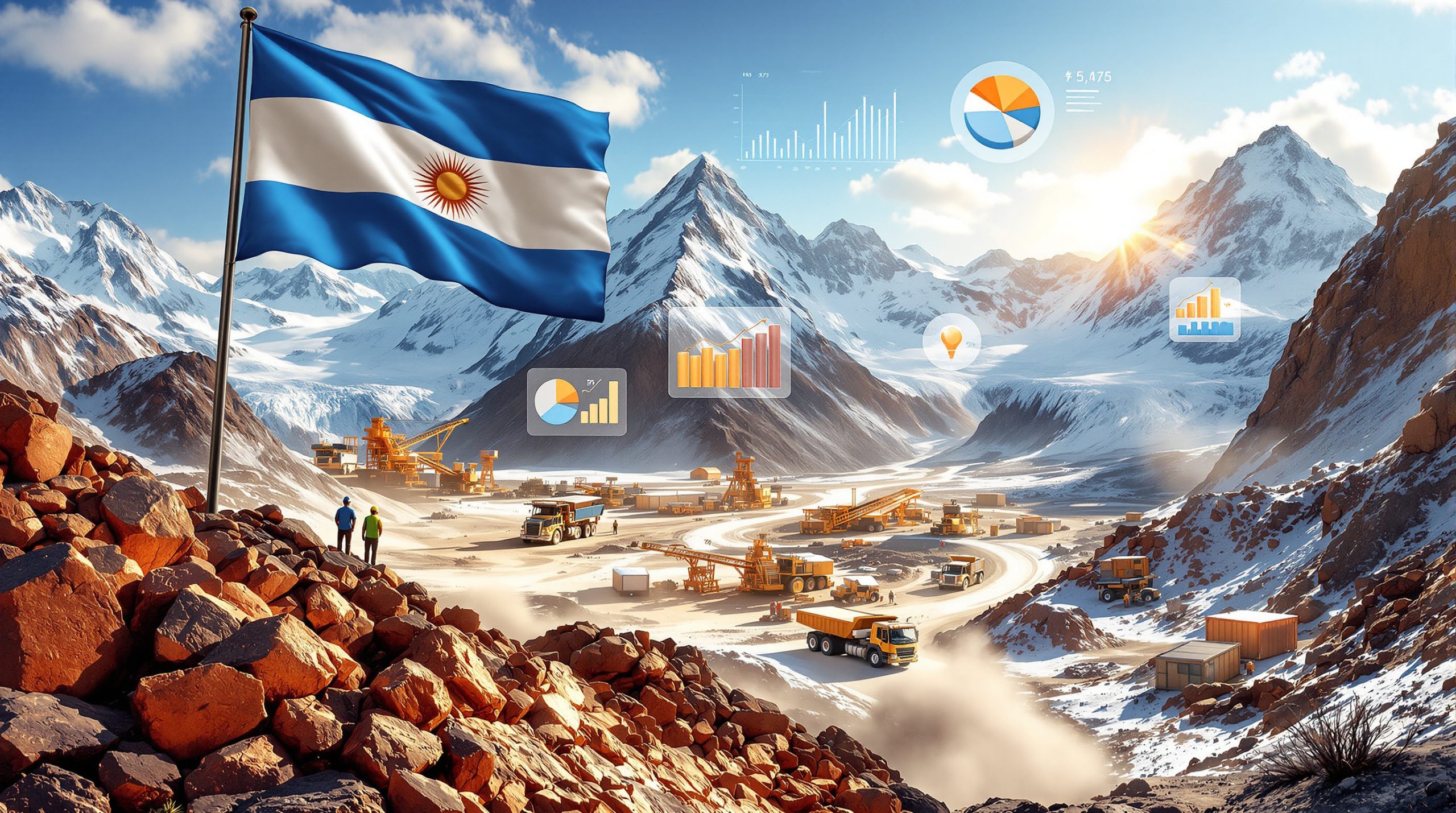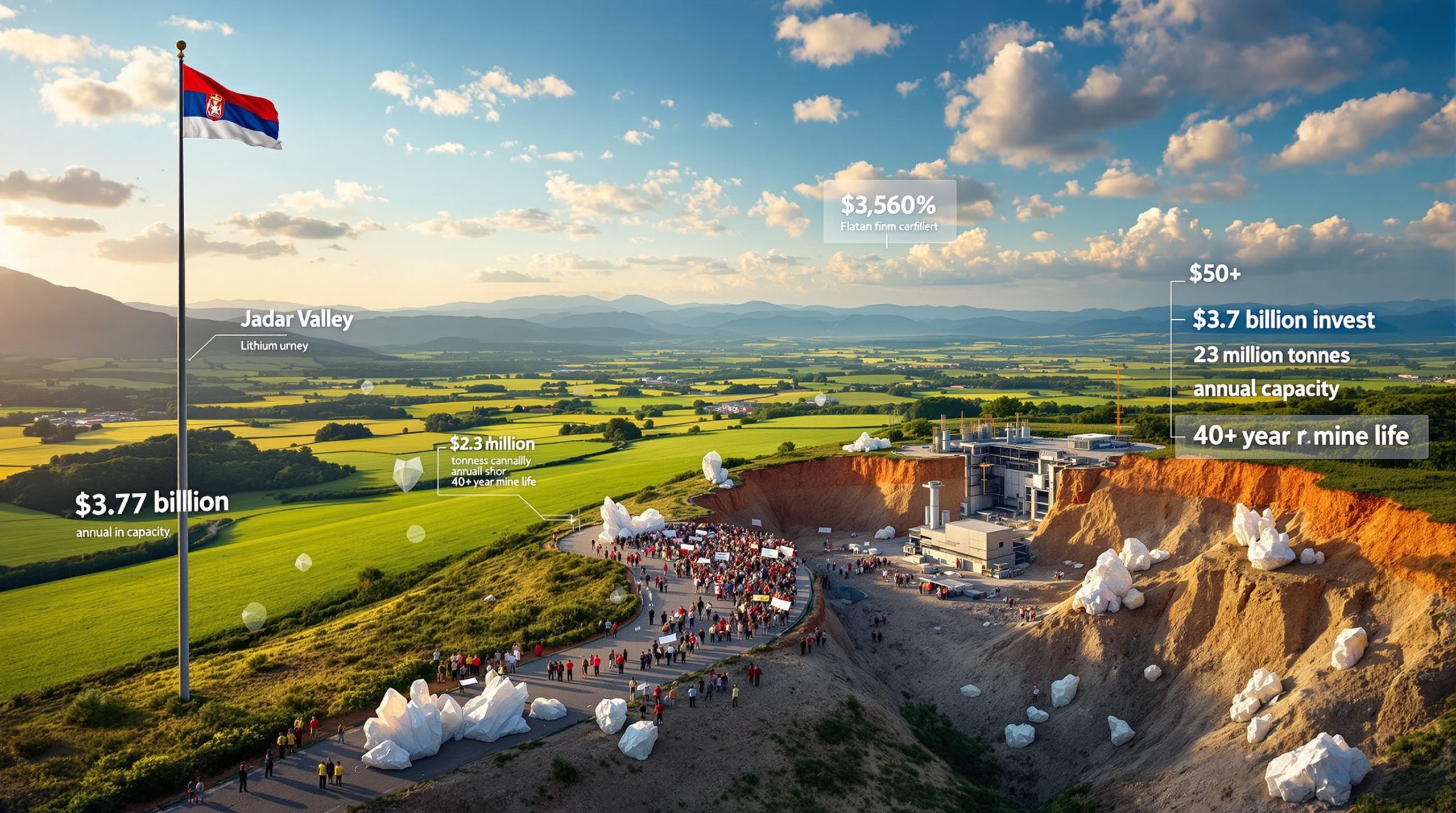Understanding Argentina's Mining Transformation Under Milei's Administration
Argentina's copper mining sector stands at a transformative crossroads under President Javier Milei's administration. The nation is implementing sweeping policy changes designed to unlock vast copper resources that have remained largely untapped due to existing regulatory frameworks.
The policy change Argentina copper mining reforms centre on fundamental modifications to glacier protection legislation and investment incentive structures. These changes could position Argentina as a major player in global copper markets, challenging the dominance of traditional South American producers.
Furthermore, these developments align with broader copper price insights suggesting significant market opportunities for new entrants.
Current Mining Policy Framework:
| Policy Area | Previous Approach | New Direction |
|---|---|---|
| Glacier Protection | National oversight via IANIGLA | Provincial authority |
| Investment Stability | Limited guarantees | 40-year legal protection |
| Mining Access | Restrictive federal control | Streamlined provincial permits |
| Environmental Oversight | Centralised national standards | Regional flexibility frameworks |
The transformation involves transferring critical decision-making authority from national environmental agencies to provincial governments. This shift represents more than administrative restructuring; it fundamentally alters how Argentina approaches the balance between environmental protection and economic development.
Argentina possesses 116 million metric tonnes of identified copper resources, yet exported only $4 billion worth of copper in 2024. By comparison, Chile generated $50 billion in copper exports during the same period, highlighting Argentina's significant underperformance relative to its resource endowment.
How Will Glacier Law Reforms Unlock Copper Resources?
The glacier protection framework represents the most contentious aspect of Argentina's mining transformation. Current legislation defines glaciers broadly as any stable or slowly flowing perennial ice mass, including associated frozen or ice-saturated soils that regulate water resources.
Provincial Authority Transfer
The proposed policy change Argentina copper mining framework would transfer glacier boundary determination from IANIGLA (Argentina's Institute of Nivology, Glaciology and Environmental Sciences) to provincial governments. This transition addresses what Milei characterises as poorly defined glacier perimeters based on unclear criteria.
Provincial governments would gain authority to redefine glacier zones, potentially reducing protected area sizes and expanding accessible mining territories. This represents a fundamental shift from national environmental oversight to regional economic development priorities.
However, Argentina's strategic approach must be considered within the broader context of global copper supply forecast trends affecting worldwide production patterns.
Potential Resource Access Expansion:
- San Juan Province: Major copper deposits including Vicuña and El Pachón could access previously restricted areas
- Mendoza Region: High-altitude Andean formations may become developable
- Catamarca Area: Glacial-adjacent copper resources could enter production pipelines
Environmental and Water Security Implications
Critics argue this policy change Argentina copper mining approach could compromise regional water security. Glacial systems provide essential meltwater for agricultural irrigation across multiple provinces, supporting food production networks that extend far beyond mining regions.
The existing legal framework protects not only visible ice formations but also subsurface hydrological systems critical to regional water regulation. Reducing these protective boundaries raises questions about long-term water availability for agricultural and municipal use.
Environmental Concern: Glacier meltwater serves as the primary water source for agricultural projects throughout Argentina, making glacier protection essential for food security alongside water resource management.
What Investment Incentives Are Driving Foreign Capital Inflows?
Argentina's RIGI (Strategic Investment Promotion Regime) program provides unprecedented investment protection mechanisms designed to attract international mining capital. The programme offers 40-year legal stability guarantees, protecting investments from future policy reversals.
Tax Benefits and Stability Framework
The RIGI programme creates comprehensive incentive structures including accelerated depreciation schedules, reduced corporate tax rates, customs duty exemptions on imported mining equipment, and enhanced foreign exchange flexibility for international transactions.
Rio Tinto's entry into Argentina demonstrates the effectiveness of these incentives. The company's former chief executive Jacob Stausholm specifically cited Argentina's newly established legal stability guarantees as the decisive factor in their market entry decision.
Key Investment Attractions:
- Long-term Legal Protection: Four-decade guarantee against policy changes
- Tax Optimisation: Reduced corporate rates for qualifying mining projects
- Equipment Import Benefits: Duty-free importation of specialised machinery
- Currency Flexibility: Enhanced foreign exchange transaction capabilities
International Mining Company Response
Major global mining corporations have responded positively to Argentina's policy change Argentina copper mining incentives. Beyond Rio Tinto's market entry, companies like Glencore are advancing development timelines for major copper projects previously constrained by regulatory uncertainty.
The combination of legal stability guarantees and glacier law reforms creates a more attractive investment environment than many emerging market mining jurisdictions. This competitive advantage positions Argentina to capture significant foreign direct investment in copper development.
In addition, these changes reflect broader trends in mineral exploration in copper development across emerging markets.
Which Copper Projects Will Benefit Most from Policy Changes?
Several major copper developments are strategically positioned to capitalise on Argentina's regulatory transformation, particularly projects located near glacial boundaries in San Juan Province.
Priority Development Projects
El Pachón Copper Mine (Glencore)
Located in San Juan Province near the Chilean border, El Pachón represents one of Argentina's most significant copper development opportunities. The project's proximity to glacial zones has historically constrained development, making it a primary beneficiary of proposed boundary reforms.
Vicuña Project (BHP/Lundin Partnership)
This high-grade Andean copper deposit exemplifies the type of resource that glacier law reforms could unlock. The project's strategic position near glacial boundaries has limited development options under current regulations.
Both projects benefit from the policy change Argentina copper mining framework through expanded access to previously restricted copper deposits and enhanced investor confidence from RIGI programme protections.
Regional Mining Infrastructure Development
The regulatory changes are catalysing integrated mining corridor development across Argentina's copper-rich provinces. These corridors include supporting infrastructure essential for large-scale mining operations.
Consequently, these developments contribute to broader patterns observed in mining industry evolution across South America.
Transportation Networks:
- New rail connections linking mine sites to Pacific ports
- Enhanced road infrastructure for equipment transport
- Cross-border logistics coordination with Chilean export facilities
Power Generation Systems:
- Renewable energy projects dedicated to mining operations
- Grid expansion to remote Andean locations
- Sustainable power solutions for water-intensive copper extraction
Water Management Infrastructure:
- Advanced recycling systems for arid mining regions
- Efficient water utilisation technologies
- Glacial meltwater conservation protocols
How Do Argentina's Copper Resources Compare Globally?
Argentina's copper endowment positions the country among world leaders in proven reserves, though current production significantly underutilises this potential. The policy change Argentina copper mining reforms aim to bridge this production gap.
Global Copper Resource Comparison:
| Country | Proven Reserves | Current Production Status | Market Position |
|---|---|---|---|
| Chile | Market leader | High production efficiency | Dominant regional producer |
| Peru | Significant reserves | Established export infrastructure | Strong global presence |
| Argentina | 116 million tonnes | Underutilised potential | Emerging market opportunity |
| Australia | Substantial deposits | Mature mining operations | Established global supplier |
Production Growth Potential
Industry analysis suggests Argentina could achieve substantial production increases through successful policy implementation. The combination of glacier law reforms and RIGI incentives could unlock previously inaccessible deposits whilst attracting the foreign investment necessary for large-scale development.
Current production limitations stem primarily from regulatory restrictions rather than geological constraints. Argentina's copper resources exhibit quality grades competitive with established producing regions, indicating strong potential for commercial viability under reformed regulatory frameworks.
For instance, these opportunities complement broader copper and uranium investments emerging across multiple jurisdictions.
Development Timeline Projections:
- 2025-2027: Initial project approvals and infrastructure development
- 2028-2030: First major mines entering commercial production
- 2031-2035: Potential emergence as significant global copper supplier
What Are the Environmental and Social Implications?
The policy change Argentina copper mining reforms generate significant debate regarding environmental protection, water resource management, and community impact across affected regions.
Water Resource Management Concerns
Environmental organisations highlight potential risks to Argentina's comprehensive water security systems. Glacial meltwater provides consistent water flows essential for agricultural irrigation networks that extend far beyond mining regions.
Copper extraction requires substantial water resources, creating potential competition with agricultural and municipal water needs. The intersection of reduced glacier protection and increased mining activity raises concerns about long-term water availability.
Regional Water Dependencies:
- Agricultural Irrigation: Glacial meltwater supports extensive farming operations
- Municipal Water Supply: Regional cities depend on glacier-fed river systems
- Industrial Applications: Water-intensive industries rely on consistent flow availability
Community Economic Development
Supporters emphasise substantial economic opportunities generated by expanded copper mining operations. The policy reforms could create significant employment and infrastructure development across historically underdeveloped regions.
Economic Benefits:
- Direct Employment: Mining operations create high-paying technical positions
- Regional Development: Infrastructure improvements benefit local communities
- Service Industries: Supporting businesses emerge around major mining operations
- Government Revenue: Increased mining activity generates substantial tax income
Industry Perspective: Modern copper extraction technologies minimise environmental impact whilst maximising economic benefits through efficient resource utilisation and comprehensive environmental management systems.
Environmental Monitoring and Protection
The transfer of authority to provincial governments raises questions about environmental oversight capability and consistency. Provincial agencies must develop technical expertise previously concentrated in national institutions like IANIGLA.
Environmental groups argue that decentralised oversight could weaken protection standards, whilst industry advocates suggest provincial agencies can provide more responsive and locally appropriate environmental management.
How Will These Changes Affect Global Copper Markets?
Argentina's emergence as a major copper producer through successful policy change Argentina copper mining implementation could significantly influence worldwide supply dynamics and pricing structures.
Supply Chain Diversification Benefits
Argentina's entry into major copper production offers global manufacturers alternative supply sources, reducing dependence on traditional suppliers and enhancing supply chain resilience. This diversification provides strategic advantages for international copper consumers.
Market Impact Factors:
- Supply Security: Additional production sources reduce geopolitical risk
- Price Stabilisation: Increased supply capacity moderates price volatility
- Competition Dynamics: New entrant challenges established producer dominance
- Long-term Availability: Substantial reserves ensure sustained production capacity
Regional Competition Dynamics
Argentina's potential emergence as a significant copper producer would challenge the traditional dominance of Chile and Peru in South American copper markets. This competition could drive operational efficiency improvements and competitive pricing across the region.
Furthermore, developments like President Milei's push to accelerate Argentina's copper boom demonstrate the government's commitment to transforming the sector.
Price Impact Analysis
Substantial new copper supply from Argentine operations could influence global pricing trends, particularly in long-term contract markets. However, growing global demand for copper in renewable energy applications and electric vehicle manufacturing may absorb additional supply without significant price depression.
Market Considerations:
- Demand Growth: Electric vehicle adoption drives copper consumption increases
- Supply Response: Argentine production provides market responsiveness to demand growth
- Price Moderation: Additional supply sources help stabilise price fluctuations
- Market Balance: New production helps meet growing global copper requirements
What Implementation Timeline Should Investors Expect?
The policy change Argentina copper mining implementation follows a structured timeline with specific legislative, regulatory, and operational milestones that investors must understand for strategic planning purposes.
Legislative and Regulatory Phases
Congressional review of glacier law revisions represents the critical first phase of implementation. This process requires careful political navigation given environmental opposition and regional economic interests.
Implementation Schedule:
| Phase | Timeline | Critical Activities |
|---|---|---|
| Legislative Review | Q1-Q2 2025 | Congressional glacier law revision process |
| Provincial Framework | Q2-Q3 2025 | Regional boundary determination systems |
| Project Approvals | Q3-Q4 2025 | Major mining permit issuance |
| Infrastructure Development | 2026-2028 | Transportation and power system construction |
| Commercial Operations | 2028-2030 | First major mines entering production |
Investment Risk Assessment
Investors must evaluate multiple risk factors that could affect implementation timelines or policy effectiveness. Political stability, environmental legal challenges, and international pressure represent key variables.
Risk Considerations:
- Political Continuity: Future administrations may modify or reverse policies
- Legal Challenges: Environmental groups may pursue court actions
- International Relations: Environmental advocacy organisations may influence policy decisions
- Technical Implementation: Provincial agencies require capacity building for new responsibilities
Project Development Timelines
Major copper projects like El Pachón and Vicuña face multi-year development cycles even under favourable regulatory conditions. Infrastructure development, equipment procurement, and workforce development require substantial lead times.
The policy change Argentina copper mining reforms accelerate permitting processes, but fundamental project development timelines remain constrained by technical and logistical requirements rather than regulatory approval speeds.
Frequently Asked Questions About Argentina's Copper Policy Changes
Will the glacier law changes be permanent?
The RIGI programme's 40-year legal stability guarantees provide substantial protection against policy reversals, though constitutional challenges and future political changes remain possible variables. The durability depends partly on successful implementation and demonstrated economic benefits.
How will environmental monitoring be maintained under provincial authority?
Provincial governments will assume primary responsibility for environmental oversight, with federal agencies potentially providing technical support and coordination. This transition requires substantial capacity building in provincial environmental agencies.
What impact will this have on global copper prices?
Argentine production increases could moderate long-term copper price growth whilst providing supply chain diversification benefits. However, growing global demand for copper in renewable energy and electric vehicles may absorb additional supply without significant price depression.
When will major projects begin commercial production?
Projects like El Pachón and Vicuña are positioned to begin commercial operations between 2028-2030, pending successful policy implementation and regulatory approvals. Infrastructure development requirements will significantly influence actual production timelines.
How does RIGI compare to other mining investment incentive programmes?
Argentina's 40-year legal stability guarantee represents one of the longest protection periods offered by any mining jurisdiction. Combined with tax incentives and regulatory streamlining, RIGI creates a competitive investment environment relative to other emerging market mining opportunities.
The policy change Argentina copper mining transformation represents a fundamental shift in Argentina's approach to mineral resource development, balancing economic opportunity with environmental responsibility through decentralised governance structures and comprehensive investor protection mechanisms.
Looking for Opportunities in Argentina's Copper Transformation?
Discovery Alert's proprietary Discovery IQ model delivers real-time alerts on significant copper and mineral discoveries across the ASX, empowering subscribers to identify actionable opportunities ahead of the broader market. Understand why historic discoveries can generate substantial returns by exploring Discovery Alert's dedicated discoveries page, showcasing exceptional outcomes from major mineral finds.




